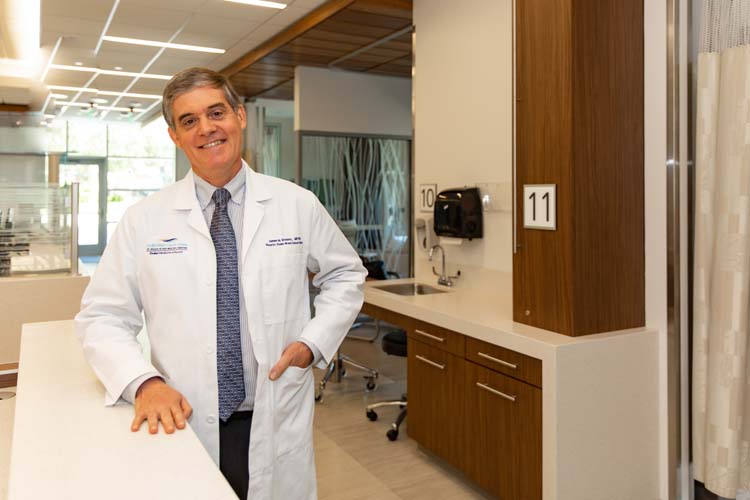
When Scully Welsh Cancer Center director Dr. James Grichnik talks about something that sounds a lot like “crisper,” he doesn’t mean the refrigerator drawer where you store your lettuce.
Instead, he’s talking about CRISPR/Cas9 or “clusters of regularly interspaced short palindromic repeats,” a new and possibly game-changing type of gene editing that may prove capable of stopping cancer – and a host of other diseases – dead in their tracks.
Vox.com calls CRISPR “one of the biggest and most important science stories of the past few years, which will probably also be one of the biggest science stories of the next few years.”
The U.S. National Library of Medicine agrees. It says “genome (or gene) editing is a group of technologies that give scientists the ability to change an organism’s DNA. These technologies allow genetic material to be added, removed, or altered at particular locations inside the genome,” and it goes on to say CRISPR is “faster, cheaper, more accurate and more efficient than other existing gene editing methods.”
In ongoing laboratory tests, the CRISPR/Cas9 process has shown it can now “recruit” cells in our blood to fight cancer tumors. As the Washington Post put it in a July 2018 article, it does this by transforming a type of white blood cell that normally targets bacterial or fungal infections into a living cancer drug which, “like microscopic bloodhounds,” can track down tumors and kill them.
Grichnik almost gleefully admits “we stole it from nature.”
The National Institutes of Health confirms that “theft,” saying “CRISPR-Cas9 was adapted from a naturally occurring genome editing system in bacteria. The bacteria capture snippets of DNA from invading viruses and use them to create DNA segments known as CRISPR arrays. The CRISPR arrays allow the bacteria to ‘remember’ the viruses. If the viruses attack again, the bacteria produce RNA segments from the CRISPR arrays to target the viruses’ DNA. The bacteria then use Cas9 or a similar enzyme to cut the DNA apart, which disables the virus.”
It’s obviously a complex topic, but a clearly energized Grichnik makes it at least somewhat clearer.
“So, cells naturally don’t want to be accepting DNA from the outside world. What we have to do in our research centers is develop a number of techniques to get DNA into cells so that we can study them or change them in one form or another. A number of approaches have developed through the years.”
One older approach [compared to CRISPR] is electroporation which, Grichnik says, “is essentially electrocuting cells. You fry them in an electric field. You poke them full of holes and DNA gets in. It may even be pulled in by that electric current.”
Grichnik goes on to offer a caveat, warning that no matter how encouraging gene editing seems now, we’re not quite there. Yet.
He cautions that “putting something into a patient that years later turns out to be a cancer that you induced because the virus integrated into the wrong location is the underlying fear. We’re going to have situations where we probably induced a mutation or we created a problem … but the hope is that would be very, very rare.”
Continuing on what he calls “the risk benefit ratios,” Grichnik points out that similar risks are found in today’s cancer treatments, including chemotherapy.
“We have patients [on chemo] where we’ve cured the cancer,” Grichnik continues, “but we’ve hurt their immune system so much that they get infections. Or they get anemia which [also] causes problems.”
Still, this world-renowned melanoma expert remains enthused about CRISPR.
“Genetic engineering is where the power is now. I think we feel comfortable with engineering the immune system to kill cancer and that’s what we’re talking about today.”
A topic he hopes is only slightly further down the road relates to children born with autoimmune blistering diseases. Fixing those infants’ skin cells so they don’t have to have those horrible diseases is something Grichnik feels may also be possible soon.
Asked to pull out his crystal ball and make a prediction, Grichnik stoically says, “I think we’re going to see this in the next few years. I think that technology is moving very quickly now and I think three to five years is a very rational timespan. I think the reality is the advances we’ve made in cancer therapy in the last decade have been enormous and the ability now to engineer the immune system to specifically clear cancers is huge.”
Dr. James Grichnik is the medical director of Vero Beach’s Scully-Welsh Cancer Center, located behind the Indian River Medical Center.



